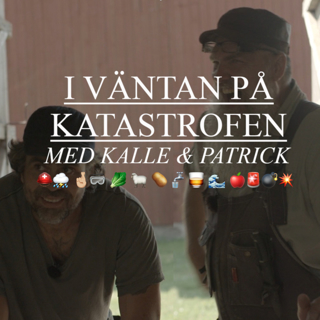
Ep. 120 Pulmonary Embolism (PE) Interventions and Response Teams with Dr. Eric Secemsky
Interventional Radiologist Sabeen Dhand talks with Interventional Cardiologist Eric Secemsky about building a Pulmonary Embolism (PE) Response Team, and about the various techniques for treatment of PE used in his practice. --- EARN CME Reflect on how this Podcast applies to your day-to-day and earn AMA PRA Category 1 CMEs: https://earnc.me/8gzIHN --- SHOW NOTES In this episode, interventional cardiologist Dr. Eric Secemsky and our host Dr. Sabeen Dhand discuss pulmonary embolization and the coordination of Pulmonary Embolism Response Teams (PERTs). Dr. Secemsky starts by introducing the diagnosis of pulmonary embolisms. He explains the classification of patients into the categories of massive, submassive, and low-risk embolisms, as well as echocardiogram and CT imaging. His workup includes not only checking for clot burden, but also checking for vital sign abnormalities, evidence of right ventricle dysfunction, and neurological deficits. Then, we transition to talking about the structure, workflow, and communication technologies used in pulmonary embolism response teams. Dr. Secemsky describes his experience with building a response team and ensuring its adaptability for a variety of cases. He emphasizes the importance of multidisciplinary care and team members’ accountability for every patient. Finally, we discuss treatment of pulmonary embolism, based on how emergent a case is. Dr. Secemsky describes factors to consider when employing different treatments: clot extraction devices, thrombolytics, and anticoagulants. Additionally, we cover the topics of catheter-directed thrombolysis, mechanical thrombectomy, and surgical embolectomy. --- RESOURCES Interventional Therapies for Acute Pulmonary Embolism: Current Status and Principles for the Development of Novel Evidence: A Scientific Statement From the American Heart Association- https://www.ahajournals.org/doi/full/10.1161/CIR.0000000000000707 AHA guidelines for the classification of massive, submassive, and low-risk pulmonary embolisms. PERT Consortium- https://pertconsortium.org/ Diagnosis, Treatment and Follow Up of Acute Pulmonary Embolism: Consensus Practice from the PERT Consortium- https://www.ncbi.nlm.nih.gov/pmc/articles/PMC6714903/ SUNSET sPE study- https://vivaphysicians.org/news-article?id=88424
12 Apr 202150min

Ep. 119 Intravascular Ultrasound (IVUS) for Peripheral Arterial Work with Dr. Bryan Fisher
Interventional Radiologist Sabeen Dhand talks with Vascular Surgeon Bryan Fisher about the benefits of using Intravascular Ultrasound (IVUS) for endovascular treatment of peripheral arterial disease (PAD), as well as the potential for other emerging imaging modalities such as Optical Coherence Tomography (OCT). --- EARN CME Reflect on how this Podcast applies to your day-to-day and earn AMA PRA Category 1 CMEs: https://earnc.me/V3Kshz
5 Apr 202139min

Ep. 118 Treating Acute Limb Ischemia with Dr. Donald Garbett
Interventional Radiologist Dr. Donald Garbett talks with Dr. Michael Barraza about how he approaches acute limb ischemia, including different endovascular techniques for removing acute arterial clot. --- SHOW NOTES In this episode, Dr. Donald Garbett joins Dr. Michael Barraza to discuss treating acute limb ischemia. We explain when to take a hospital patient to the OR instead of angio, and Dr. Garbett tells us why he prefers establishing severity of the limb ischemia using the Rutherford classification. We discuss the circumstances of needing to have an immediate procedure, and what challenges may occur in these patients. We discuss the beginning of treating acute limb ischemia, including getting access, initial angions, and when to get an ACT. We review how to get femoral access, and we explain some cases where a different type of access is needed. We discuss which sheath size to use for diagnostics and when lysing overnight. Dr. Garbett tells us when he will lyse while treating acute limb ischemia and why he treats the underlying issue first. We review the different kinds of grafts, and we discuss what guides the approach to re-vascularizing a graft. We talk through some challenging situations that can occur when working on a graft and the dangers of the lipstick effect. We discuss how to use balloons to treat an underlying stenosis and how to deal with an unexpected intraprocedural clot. We discuss follow-up care and working with vascular surgery to coordinate care.
29 Mars 202148min

Ep. 117 Successful (and Quick!) Declots for AV Access with Dr. Neghae Mawla
Interventional Radiologist Christopher Beck talks with Interventional Nephrologist Neghae Mawla about how to perform successful Declot procedures for AV fistulae and grafts, including tips and tricks to make this procedure safe and efficient. --- SHOW NOTES In this episode, Dr. Neghae Mawla joins Dr. Christopher Beck and Dr. Aaron Fritts to discuss declots for AV access. We discuss what to include in a work up for a declot and how to assess the size of an aneurysm. Dr. Mawla tells us about the cases where he would not perform a declot, and he explains why he might choose to place catheter and dialyze first. We discuss how to set up the room and how to prepare for the declot procedure. Dr. Mawla shares the reasons why he does not use an IV or ultrasound in pre-op. We explain the differences between using balloon maceration vs rotational thrombectomy device for treating outflow clot. We also touch on the back bleeding technique for declots. We review the up-down technique, how to use ultrasound to your advantage, and how to avoid overlapping sheaths. We discuss clot burden and why declot procedure length may vary. We explain some different techniques for using multiple sheaths at a time, and Dr. Mawla tells us about troubleshooting during a recalcitrant stenosis. We discuss how to decide when to stent lesions and what follow-up care looks like. Dr. Beck and Dr. Fritts share some of their favorite things they have learned from Dr. Mawla about declots.
22 Mars 20211h 4min

Ep. 116 Evaluation & Management (E&M) Coding 101 with Dr. Ryan Trojan
Dr. Ryan Trojan gives us a 101 on Evaluation and Management (E/M) Coding, including tips and tricks for capturing inpatient notes and practice building, as well as the updates for success in 2021. --- SHOW NOTES In this episode, Dr. Ryan Trojan joins Dr. Christopher Beck to discuss Evaluation and Management (E&M) coding in IR. We discuss what a practice that uses E&M looks like and the pros of integrating E&M into a practice while IR becomes more clinical. Dr. Trojan explains why he thinks relative value units (RVUs) are worth the bit of extra time. We clear up some of the misinformation about E&M, and we discuss global billing periods. We discuss templates, Epic, and some important details about Modifier-25 for E&M. We explain medical decision making in terms of problem point, data points, and risk. We discuss the four levels of complexity and the subsets of risk. We talk through documenting history and why it is important to use straightforward language. We discuss the most typical codes used in E&M and which codes to know for specific scenarios such as physical exams, consults, and admission. Dr. Trojan tells us some of the updates to E&M in 2021 for outpatient care. We talk about how E&M is useful when building relationships with referring doctors. --- RESOURCES Dr. Trojan’s Youtube Video https://tinyurl.com/b5pvbcer Dr. Trojan’s Templates Progress Notes: https://tinyurl.com/2uzm6hua Beck Outpatient Consultation: https://tinyurl.com/uaukf7vc Beck Inpatient Consult Note: https://tinyurl.com/a7fupr67 Resident Time Phrases: https://tinyurl.com/5uvxattn Inpatient Consult: https://tinyurl.com/2vebu7rz SIR Toolkit https://tinyurl.com/3ctz27a8 E&M Coding Education https://emuniversity.com/ Financial Advising https://www.edwardjones.com/us-en/financial-advisor/yaphet-tadesse
19 Mars 20211h 5min

Ep. 115 Novel Right Heart Interventions with Dr. John Moriarty
Dr. Sabeen Dhand talks with Dr. John Moriarty about how he started removing "clot in transit" from the right heart, in addition to the PE and caval procedures, and how this service line has created a great collaboration with cardiology colleagues at UCLA Health. --- EARN CME Reflect on how this Podcast applies to your day-to-day and earn AMA PRA Category 1 CMEs: https://earnc.me/XRRcBv --- SHOW NOTES In this episode, Dr. John Moriarty joins Dr. Sabeen Dhand to discuss novel right heart interventions. Dr. Moriarty tells us how he started working on right heart interventions, and we describe what a clot in transit is and how often they occur. We explain how to decide when to do a right heart intervention for various types of clots, and we discuss the difference between the European and US right heart registries. We talk through some of the common devices used for right heart interventions, such as the angiovac. We compare cable work and right heart work, and we discuss how collaborating with cardiology and anesthesia can be helpful. Dr. Moriarty tells us how often he uses a transesophageal echocardiogram (TEE). We share some advice for those hoping to start performing right heart interventions and how to build confidence when starting this part of his practice. --- RESOURCES Edward Jones Financial Advisor Yaphet Tadesse: https://www.edwardjones.com/us-en/financial-advisor/yaphet-tadesse
15 Mars 202127min

Ep. 114 Origin Story of the Palmaz Stent with Dr. Julio Palmaz
Dr. Julio Palmaz talks with Dr. Bryan Hartley about where he got the idea for the first commercially-available vascular stent, how he developed it working in his garage, and persevered despite repeated rejections to take it to market. Don't miss this one! --- EARN CME Reflect on how this Podcast applies to your day-to-day and earn AMA PRA Category 1 CMEs: https://earnc.me/biTSNQ --- SHOW NOTES In this episode, Dr. Julio Palmaz joins Dr. Bryan Hartley to discuss the origin story of his invention, the Palmaz Stent. Dr. Palmaz tells us about how he got into IR and the difference between practicing in Argentina and the United States. We discuss how Dr. Palmaz became interested in innovation and how he got started in academia. Dr. Palmaz talks about what inspired him to make the stent and what angioplasty looked like before he started working on the Palmaz Stent. We discuss how he began working on a prototype out of his garage, and we explain some of the challenges he faced in trying to get balloons to test out. We talk about welding and the cross points of the stent, and Dr. Palmaz tells us about the challenges of proposing his ideas to companies. We discuss working with mentors, getting grants and investors, and approaching Johnson & Johnson. Dr. Palmaz shares some of the biggest challenges he faced during his innovation of the Palmaz Stent. He explains his newest projects and what he sees for the future of medical devices.
8 Mars 20211h 3min

Ep. 113 Below-Ankle Interventions with Dr. Kumar Madassery
Dr. Sabeen Dhand and Dr. Kumar Madassery discuss the importance of below-ankle interventions in limb salvage, including patient selection, technique, and a patient-centered longitudinal care plan. --- SHOW NOTES In this episode, Dr. Kumar Madassery joins Dr. Sabeen Dhand to discuss below ankle interventions. We discuss how to approach tissue loss in patients with severe and multi-level disease in order to minimize below ankle interventions and how to optimize imaging to get a comprehensive view. We explain the tips and tricks of performing a pedal loop, and we review the techniques for retrograde access. We review how to carefully manipulate wires during a pedal loop procedure. We discuss which devices can go through the pedal loop and what qualities are important in a wire for below ankle interventions. We discuss why having lysing can lead to a successful below ankle intervention and how to know when it is appropriate to do a pedal loop. We talk about the impact social media has had on IR and give some advice for those wanting to try pedal interventions. --- RESOURCES Dr. Madassery’s Twitter: @kmadass Use code BACKTABLE for discount at ISET: https://www.iset.org/
1 Mars 202146min






















